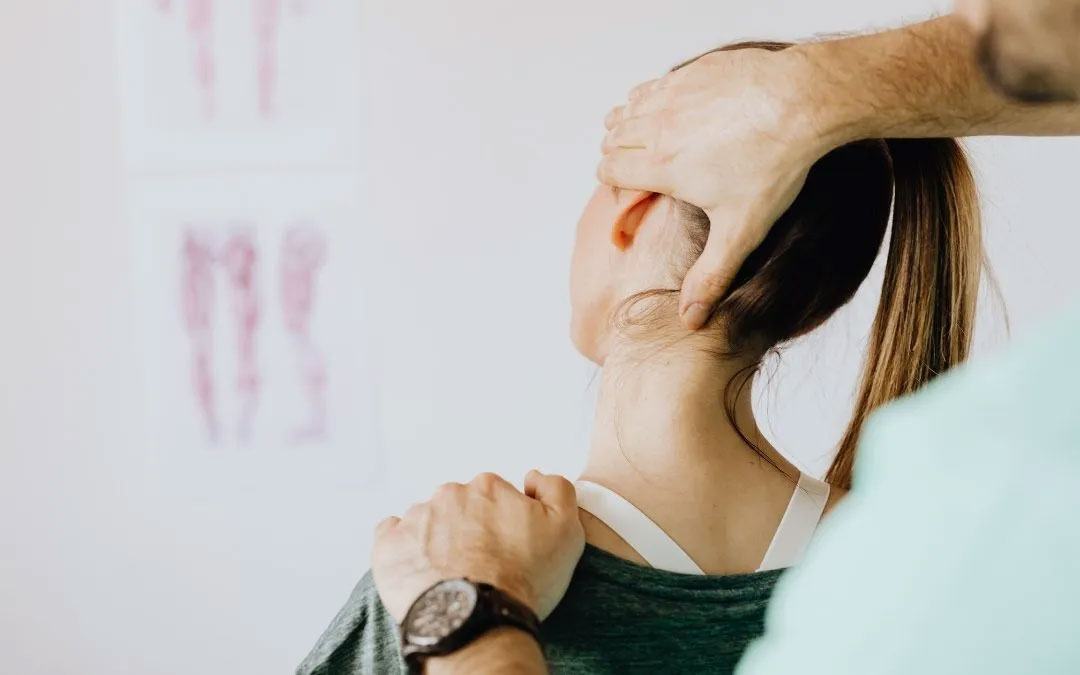"Osteopathy? That's just for backs, isn't it?"
"You're basically a chiropractor, right?"
"I heard you crack bones"
If you're curious about osteopathy, you've probably encountered these misconceptions. It's time we put them to rest.
Osteopathy isn't merely a fancy massage. It's not exclusively for back pain. And contrary to popular belief, we don't spend our days cracking joints. Osteopathy is a comprehensive, evidence-based healthcare discipline backed by rigorous science, and it addresses far more conditions than most people realise.
Here are 15 scientifically-supported benefits showing exactly why millions worldwide choose osteopathic treatment.
Myth #1: "Osteopaths Only Treat Back Pain"
The Reality: Whilst back pain remains the most frequent complaint we encounter, osteopaths treat pain and dysfunction throughout the entire body.
1. Reduces Chronic Pain (Throughout Your Body, Not Just Your Back)
Osteopathy delivers evidence-based relief for persistent pain conditions affecting any area of your body, from lower back pain and arthritis to fibromyalgia and chronic shoulder discomfort. Through manual techniques addressing underlying biomechanical causes, osteopaths restore function and reduce inflammation naturally. Research consistently shows that osteopathic manipulative treatment significantly reduces chronic pain intensity and improves function, regardless of the pain's location.
2. Addresses Root Causes of Headaches
Many tension headaches and migraines don't actually originate from your head – they stem from cervical spine dysfunction, jaw tension, or muscular triggers in the neck and shoulders. Osteopaths address these underlying causes rather than merely masking symptoms. Studies show that osteopathic treatment can significantly reduce both headache frequency and intensity without relying solely on medication.
3. Resolves TMJ Disorders
Temporomandibular joint (TMJ) disorders cause jaw pain, clicking, difficulty chewing, and even referred ear pain. These issues frequently involve dysfunction not only in the jaw itself but also in the neck, cranium, and upper spine. Osteopaths adopt a comprehensive approach to TMJ disorders, with many patients experiencing substantial relief from jaw pain and improved function through osteopathic care.
4. Accelerates Injury Recovery (From Sprains to Post-Surgical Rehabilitation)
Whether you've sprained an ankle, sustained a muscle tear, or undergone surgery, osteopathy accelerates your healing process. By optimising tissue function, reducing inflammation, enhancing circulation, and addressing compensatory patterns that develop following injury, osteopathic treatment supports your body's natural healing ability, resulting in faster recovery and reduced risk of chronic complications.
Myth #2: "Osteopaths Just Treat Bones"
The Reality: Whilst "osteo" (pronounced os-tee-oh) stems from the Greek word osteon, meaning bone, its significance extends far beyond etymology. This root forms the foundation of medical terms related to skeletal health and the study of bones, known as osteology. In osteopathythe body is treated as a complete, interconnected unit—bones, joints, muscles, fascia, circulation, nerves, and beyond—emphasising the integral role of the skeletal system within the whole.
5. Enhances Circulation
Proper circulation is fundamental to health, delivering oxygen and nutrients whilst removing metabolic waste. Manual osteopathic techniques improve both blood and lymph flow throughout the body. This enhanced circulation supports tissue healing, reduces inflammation, and promotes overall vitality, particularly beneficial for individuals with conditions like peripheral arterial disease or chronically cold extremities.
6. Supports Immune Function
This surprises many patients: osteopathy bolsters your immune system by improving lymphatic drainage and circulation. The lymphatic system is crucial for immune function, and when it flows freely, your body can more effectively combat infections and illness. Manual techniques enhancing lymphatic pump function have been shown to increase immune markers in the bloodstream.
7. Addresses Digestive Dysfunction
The gut-structure connection is scientifically established. Structural dysfunction in the thoracic spine, diaphragm, or abdominal region can impair digestive function by influencing nerve supply and mechanical function of the digestive organs. Osteopaths address these structural factors through specific techniques that can assist with conditions like irritable bowel syndrome (IBS), bloating, and constipation.
8. Optimises Respiratory Function
Restrictions in the ribcage, thoracic spine, or diaphragm can limit your breathing capacity – something you perform 20,000 times daily. Osteopaths enhance ribcage mobility and diaphragm function through specific manual techniques, which proves particularly beneficial for individuals with asthma, COPD, or those seeking to optimise respiratory function for improved athletic performance or stress management.
Myth #3: "Osteopaths, Physiotherapists, and Chiropractors Are Essentially the Same"
The Reality: Whilst all three professions treat musculoskeletal conditions, osteopathy's holistic philosophy and comprehensive approach distinguishes it.
9. Corrects Postural Dysfunction (By Addressing Root Causes)
Poor posture isn't simply about remembering to "sit up straight" – it's the consequence of muscular imbalances, joint restrictions, and compensatory patterns your body has developed over time. Osteopathy corrects these underlying imbalances rather than merely instructing you to hold yourself differently. By restoring proper joint mobility and muscle balance, your body naturally maintains improved posture without constant conscious effort.
10. Prevents Future Injuries (Proactive, Not Merely Reactive)
Perhaps the most valuable benefit: osteopathy identifies and corrects dysfunction before it manifests as injury. Through thorough assessment, osteopaths detect underlying imbalances, movement restrictions, and compensatory patterns that, if left unaddressed, frequently lead to injury. By addressing these issues proactively, osteopathic treatment helps you maintain health and activity levels.
11. Alleviates Stress and Anxiety (The Mind-Body Connection)
Physical and mental health are inseparable. A principle central to osteopathic philosophy. When your body holds tension, your nervous system remains in a heightened stress state. Osteopathic treatment promotes physical relaxation, which exerts a direct calming effect on the nervous system. This transition from "fight or flight" to "rest and digest" can significantly reduce feelings of stress and anxiety. Many patients report feeling profoundly relaxed and mentally clearer following treatment.
Myth #4: "The Osteopath Will Crack Your Back (Whether I Want It or Not)"
The Reality: Joint manipulation ("cracking") represents just one technique in our extensive toolkit, and you’ll always have a choice at our clinic. We use this method selectively, only when appropriate for your specific needs, and certainly not in every case.
12. Gentle Enough to Relieve Pregnancy-Related Discomfort (Safe Treatment)
Pregnancy brings tremendous physical changes, frequently accompanied by back pain, pelvic discomfort, and sciatica. Osteopathy offers safe, gentle treatment throughout all stages of pregnancy. By addressing the biomechanical changes your body undergoes and relieving pressure on nerves and joints, osteopathic care makes pregnancy considerably more comfortable. It also serves as excellent preparation for labour, helping ensure optimal pelvic alignment for delivery.
13. Reduces Blood Pressure (Gentle Yet Effective)
Osteopathy may help manage blood pressure indirectly by addressing musculoskeletal issues that influence blood pressure, such as physical tension, stress, and poor breathing mechanics.
Whilst osteopathy doesn't replace hypertension medication, research suggests that certain gentle osteopathic techniques can help lower blood pressure. This occurs through multiple mechanisms: reduced stress and anxiety, improved nervous system balance, and decreased vascular resistance. For individuals with mild hypertension or those seeking to support cardiovascular health holistically, osteopathy represents a valuable addition to their care plan.
Myth #5: "Osteopathic Treatment Is Painful"
The Reality: Treatment by an osteopath should not be a painful experience. Many techniques are remarkably gentle.
14. Enhances Sleep Quality (Through Pain Relief and Relaxation)
Struggling to achieve restorative sleep? Poor sleep frequently stems from physical tension and pain that maintains your body in an alert state. Osteopathic treatment reduces muscle tension, alleviates pain, and promotes nervous system balance – all crucial factors for quality sleep. When your body is comfortable and relaxed, your mind can finally quieten, leading to deeper, more restorative sleep.
15. Optimises Athletic Performance (Enhance, Don't Just Recover)
Elite athletes and recreational enthusiasts alike benefit from osteopathic care. By optimising movement patterns, improving joint mobility, and addressing muscular imbalances, osteopathy helps you move more efficiently and powerfully. This isn't merely about treating injuries, it's about preventing them and maximising your body's potential. Improved biomechanics translate to enhanced performance, whether you're running Victoria Peak or playing football with your children.
The Power of Treating the Body as a Unified Whole
Here's what distinguishes osteopathy: we don't simply treat symptoms. We treat you as a complete individual.
The "gentle approach" some people dismiss? That's actually our strength. By working with your body's natural healing mechanisms rather than against them, we create lasting change instead of temporary relief.
Your body possesses remarkable intelligence and healing capacity. Sometimes it simply requires proper guidance to remember how to function optimally. That's precisely what osteopathic treatment provides: not forcing change, but facilitating your body's innate ability to heal and self-regulate.
This holistic perspective explains why osteopathic treatment can address such a diverse range of conditions: from chronic pain to digestive dysfunction, from athletic performance to immune function, from pregnancy discomfort to sleep disturbances.
Why Choose Osteopathy in Hong Kong?
In Hong Kong's fast-paced environment, where many people struggle with stress, poor posture from desk work, and limited time for self-care, osteopathy offers a comprehensive solution. It's not about quick fixes or treating symptoms in isolation – it's about understanding your body as an interconnected system and addressing the root causes of dysfunction.
Unlike what many believe after comparing osteopaths, physiotherapists, and chiropractors, osteopathy's whole-person philosophy means we're examining how your work stress influences your neck tension, how your neck tension triggers your headaches, how your headaches disrupt your sleep, and how your poor sleep compromises your immune system. Everything is interconnected.
Experience Evidence-Based Osteopathic Care
Whether you're managing chronic pain, recovering from injury, optimising athletic performance, or simply seeking to maintain optimal health, our Hong Kong-based clinic is here to assist.
We don't merely treat symptoms – we identify and address the root causes of dysfunction to help you achieve lasting results. Our osteopaths combine thorough assessment with evidence-based treatment techniques tailored to your unique needs.
Still have questions about osteopathy? That's perfectly normal—these myths are widespread! Book a consultation with us to discuss how osteopathic treatment can help with your specific concerns.









